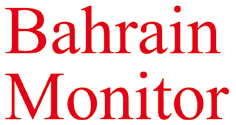
|
 |
 |
|
|
|
|
|
|
|
|
|
|
|
|
|
|
|
|
|
|
|
|
|
|
Joining the OPCAT:Bahrain’s Concerns and AspirationHasan Moosa Shafaei
In September 2012, Bahrain decided to consider the recommendation of the Human Rights Council to join the OPCAT. This attracted local and international attention and raised many questions regarding the objectives and work tools of the optional Protocol as well as the appointed bodies in charge of implementing it and their relation to the concerned country. What is the purpose of OPCAT? Why has it become a centre of attention for human right defenders locally and internationally? In other words, what can OPCAT add since concerned countries such as Bahrain have already become party states to CAT? The only purpose of this Protocol is to prevent the occurrence of torture. What makes it special is the fact that it concentrates on preventative measures and depends on the cooperation of three parties, the country concerned, the Subcommittee on Prevention of Torture (SPT) which is a UN body, and a national preventative mechanism (NPM) which bears the most responsibility in the implementation of the articles of the Protocol. Despite the fact that joining the CAT is important and beneficial, it is not enough to practically eliminate torture, as it focuses on the theoretical elements necessary in the prevention process. The Protocol is designed to compliment CAT and follows practical steps in order to make a change on the ground. Regular unannounced visits to detention centres can to some extent deter the occurrence of torture and the Protocol participates in directing and reforming the criminal justice system and the transitional process aiming at the promotion of the rule of law. Why does Bahrain need to join this Optional Protocol? This is because Bahrain is facing increasing allegations with regard to violating detainee’s rights and even the Government has acknowledged several cases which resulted in the death of citizens in detention centres. The Government says that torture is a crime punishable by law and that what take place are individual breaches. But how can we prevent these inhumane practises? And how can we convince the International Community that these violations will not take place again and that there is a political wil? to confront them? Up to this point, there are no mechanisms for confronting such practices, although a law that criminalises them exists. Hence, an independent national committee with proper mandate is needed to make regular visits to detention centres and communicate with the authorities in order to set up procedures that deter the use of torture. Through visits to detention centres, the committee can determine the reasons behind torture, analyse systematic mistakes and the reasons behind failure. By doing so it will then be possible to present recommendations in order to address the real reasons behind the use of torture and reduce its occurrence. But why is there a need for signing the Optional Protocol, since any country can establish a national committee to take on the role mentioned above? Most countries do not set up local committees for investigating and monitoring torture. In the cases when they do so, it is established in an arbitrary fashion, does not follow international standards and therefore becomes ineffective. The purpose of the Protocol is not only to establish an investigative national committee to combat torture, but to provide it with help through the expertise and experiences of the SPT. Through the SPT, the Optional Protocol makes sure that the establishment of the national?committee is within international standards and that it strives to develop the capabilities of its members. Most importantly, the Optional Protocol helps the Government regain the trust of the public following crisis characterised by human rights violations relating to detainees. It also gives the Government the opportunity to prove its commitment to protecting all members of society including the detainees. Are the objectives of SPT limited to cooperating with the national committees and providing them with the necessary help? SPT and NPM share the same goals including: 1- Conducting regular visits to detention centres and inspecting and improving their conditions in order to reduce the occurrence of torture. The national committee bears the lion share of the responsibility as it is present within the country and thus able to communicate with local authorities. 2- Presenting recommendations to the concerned authorities so that they can take preventative measures. 3- Helping the concerned country in implementing these recommendations. Why then do some countries hesitate to join the Optional Protocol? This hesitation can be attributed to three factors: Firstly: some countries are not sincere in their desire to prevent the use of torture especially when dealing with political prisoners. Torture is seen as a good tool for obtaining information and deterring the opposition. Secondly: some countries are very sensitive and see international monitoring as interference in their internal affairs, or even undermining their national sovereignty. Thirdly: most countries fear condemnation and defamation when torture cases are discovered. They also fear that these cases will be used to exert political pressure even if they are sincere in preventing torture and criminalising those responsible. The UN who designed this Protocol is aware of these issues and also understands that whoever joins it has to have good intentions and a sincere political will in preventing torture. The Protocol has made it clear that its purpose is not to condemn and defame but to cooperate and encourage constructive dialogue. This is in order to help State members achieve the real changes necessary to prevent the occurrence of torture. It also affirmed that the reports of the national committee would be made public whereas the SPT reports would remain confidential and can only be published if the concerned country allows it. The work of the SPT is similar to what other international organisations do when allowed by the Bahraini government to work inside the country and visit detention centres such as has been the case with the Red Cross which does not issue public reports. In December 2011, Bahrain signed a memorandum of understanding with the Red Cross which has been conducting regular visits to detention centres. How is it possible to guarantee the establishment of a national preventative mechanism in accordance to international standards? There are several conditions that need to be met when establishing national mechanisms including the following: - Guaranteeing its independence with regards to its activities and finances, and also the independence of its members. - The members of these committees should be competent and professional. They should also have the right to benefit from foreign expertise and all social segments should be represented. - The national mechanisms should have access to all detention centres through sudden and regular visits and meet any detainee without restrictions or surveillance. - The national mechanism should also be allowed to access all information with regards to places of detention and the detainees’ medical and dietary reports. - The staff of the national mechanism should have immunity from investigation and arrest and should be allowed to work freely. They also should have the right to protect the information they have and not disclose them. Also immunity should be given to all individuals and bodies contacting these mechanisms. - The national mechanisms should present reports and recommendations in order to improve the conditions of the prisons and detainees based on their visits. The authorities on their part should study these recommendations and meet the officials of the national mechanisms to discuss their implementation. The Protocol stressed that the national mechanisms should issue an annual report explaining their activities in preventing torture. Also, these mechanisms have the authority to present proposals and comments?regarding legislations and bills relating to the prevention of torture. - Finally, all kinds of facilitations should be provided for these mechanisms in order to communicate directly with SPT. This can take place in the shape of training courses, meeting or information exchanges. |
